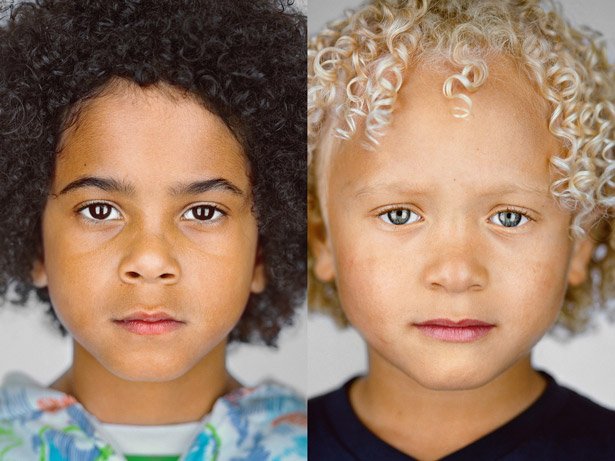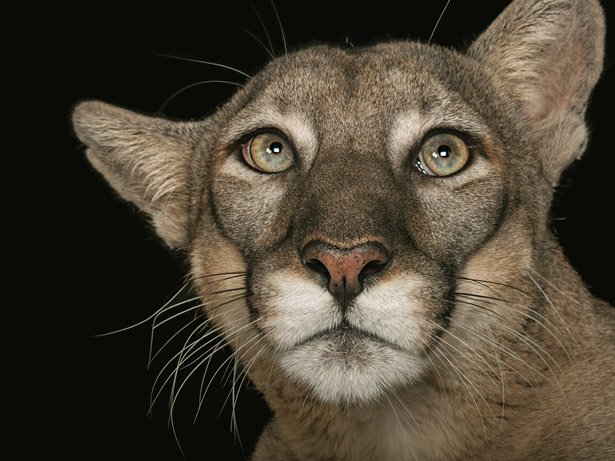Photographers use their cameras as tools of exploration, passports to inner sanctums, instruments for change. Their images are proof that photography matters—now more than ever.


Thirty-four years before the birth of this magazine, the Danish philosopher Søren Kierkegaard sourly prophesied a banal fate for the newly popularized art of photography. “With the daguerreotype,” he observed, “everyone will be able to have their portrait taken—formerly it was only the prominent—and at the same time everything is being done to make us all look exactly the same, so we shall only need one portrait.”
The National Geographic Society did not set out to test Kierkegaard’s thesis, at least not right away. Its mission was exploration, and the gray pages of its official journal did not exactly constitute a visual orgy. Years would go by before National Geographic’s explorers would begin using the camera as a tool to bring back what is now its chief source of fame: photographic stories that can alter perceptions and, at their best, change lives.
By wresting a precious particle of the world from time and space and holding it absolutely still, a great photograph can explode the totality of our world, such that we never see it quite the same again. After all, as Kierkegaard also wrote, “the truth is a snare: you cannot have it, without being caught.”
Today photography has become a global cacophony of freeze-frames. Millions of pictures are uploaded every minute. Correspondingly, everyone is a subject, and knows it—any day now we will be adding the unguarded moment to the endangered species list. It’s on this hyper-egalitarian, quasi-Orwellian, all-too-camera-ready “terra infirma” that National Geographic’s photographers continue to stand out. Why they do so is only partly explained by the innately personal choices (which lens for which lighting for which moment) that help define a photographer’s style. Instead, the very best of their images remind us that a photograph has the power to do infinitely more than document. It can transport us to unseen worlds.
When I tell people that I work for this magazine, I see their eyes grow wide, and I know what will happen when I add, as I must: “Sorry, I’m just one of the writers.” A National Geographic photographer is the personification of worldliness, the witness to all earthly beauty, the occupant of everybody’s dream job. I’ve seen The Bridges of Madison County—I get it, I’m not bitter. But I have also frequently been thrown into the company of a National Geographic photographer at work, and what I have seen is everything to admire and nothing whatsoever to envy. If what propels them is ferocious determination to tell a story through transcendent images, what encumbers their quest is a daily litany of obstruction (excess baggage fees, inhospitable weather, a Greek chorus of “no”), interrupted now and then by disaster (broken bones, malaria, imprisonment). Away from home for many months at a time—missing birthdays, holidays, school plays—they can find themselves serving as unwelcome ambassadors in countries hostile to the West. Or sitting in a tree for a week. Or eating bugs for dinner. I might add that Einstein, who snarkily referred to photographers as lichtaffen, meaning “monkeys drawn to light,” did not live by 3 a.m. wake-up calls. Let’s not confuse nobility with glamour. What transfixes me, almost as much as their images, is my colleagues’ cheerful capacity for misery.
Apparently they wouldn’t have it any other way. The lodestone of the camera tugged at each of them from their disparate origins (a small town in Indiana or Azerbaijan, a polio isolation ward, the South African military), and over time their work would reflect differentiated passions: human conflict and vanishing cultures, big cats and tiny insects, the desert and the sea. What do the National Geographic photographers share? A hunger for the unknown, the courage to be ignorant, and the wisdom to recognize that, as one says, “the photograph is never taken—it is always given.”
In the field I’ve seen some of my lens-toting compatriots sit for days, even weeks, with their subjects, just listening to them, learning what it is they have to teach the world, before at last lifting the camera to the eye. Our photographers have spent literally years immersed in the sequestered worlds of Sami reindeer herders, Japanese geisha, and New Guinea birds of paradise. The fruit of that commitment can be seen in their photographs. What’s not visible is their sense of responsibility toward those who dared to trust the stranger by opening the door to their quiet world. It’s a far riskier and time-consuming proposition to forgo the manipulated shot and instead view photography as a collaborative venture between two souls on either side of the lens.
Conscience is the other trait that binds these photographers. To experience the beauty of harp seals swimming in the Gulf of St. Lawrence is also to see the frailty of their habitat: scores of seal pups drowning due to the collapse of ice floes, a direct consequence of climate change. To witness the calamity of war in the gold-mining region of the Democratic Republic of the Congo is also to envision a glimmer of hope: Show the gold merchants in Switzerland what their profiteering has wrought, and maybe they’ll cease their purchases.
In the past 125 years, it turns out, Kierkegaard has been proved both wrong and right about photography. The images in National Geographic have revealed a world not of sameness but of wondrous diversity. But they have also, increasingly, documented societies and species and landscapes threatened by our urge for homogenization. The magazine’s latter-day explorers are often tasked with photographing places and creatures that a generation later may live only in these pages. How do you walk away from that? If my colleagues suffer a shared addiction, it’s to using the formidable reach and influence of this iconic magazine to help save the planet. Does that sound vainglorious? Ask the Swiss gold merchants. They saw Marcus Bleasdale’s images at a Geneva exhibit, and their Congolese gold purchases halted almost overnight.
Of course, every professional photographer hopes for The Epic Shot, the once-in-a-lifetime collision of opportunity and skill that gains a photograph instant entry into the pantheon alongside Joe Rosenthal’s Iwo Jima, Bob Jackson’s encounter with Jack Ruby gunning down Lee Harvey Oswald, and the Apollo 8 astronauts’ color depictions of planet Earth in its beaming entirety. And yet, game-changing photographs are not what National Geographic photographers do. The most iconic photograph ever to grace these pages is not of anyone or anything historic. Rather, it’s of Sharbat Gula, an Afghan girl of maybe 12 when photographer Steve McCurry encountered her in 1984 at a refugee camp in Pakistan. What her intense, sea-green eyes told the world from the cover of National Geographic’s June 1985 issue a thousand diplomats and relief workers could not. The Afghan girl’s stare drilled into our collective subconscious and stopped a heedless Western world dead in its tracks. Here was the snare of truth. We knew her instantly, and we could no longer avoid caring.
McCurry shot his immortal portrait well before the proliferation of the Internet and the invention of the smartphone. In a world seemingly benumbed by a daily avalanche of images, could those eyes still cut through the clutter and tell us something urgent about ourselves and about the imperiled beauty of the world we inhabit? I think the question answers itself.
Hi! I am a robot. I just upvoted you! I found similar content that readers might be interested in:
http://ngm.nationalgeographic.com/2013/10/power-of-photography/draper-text